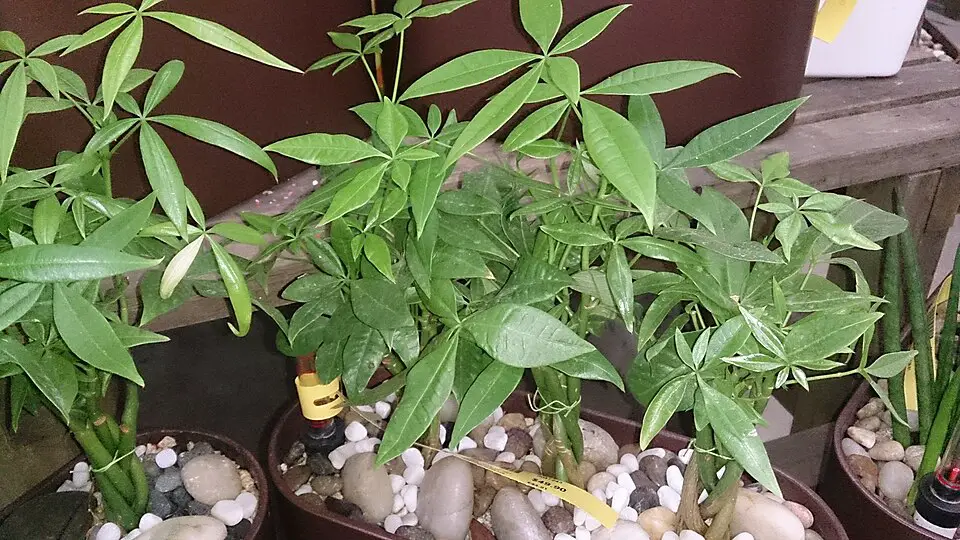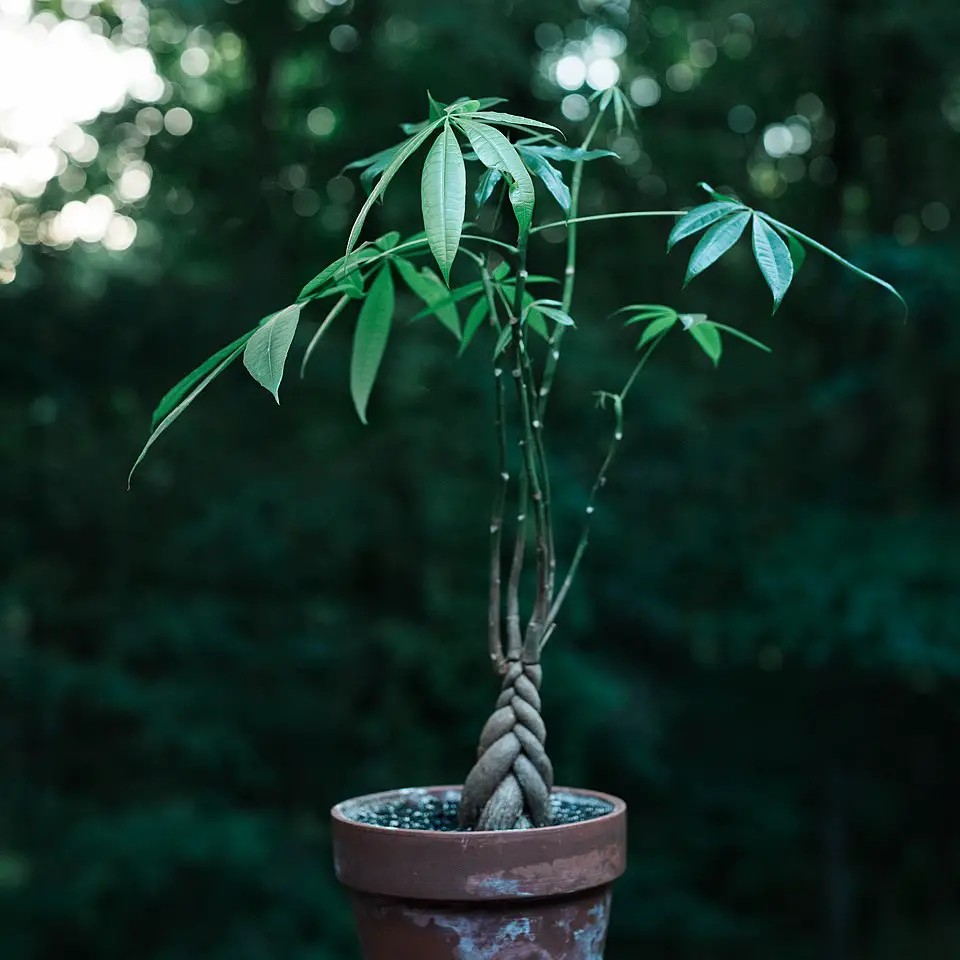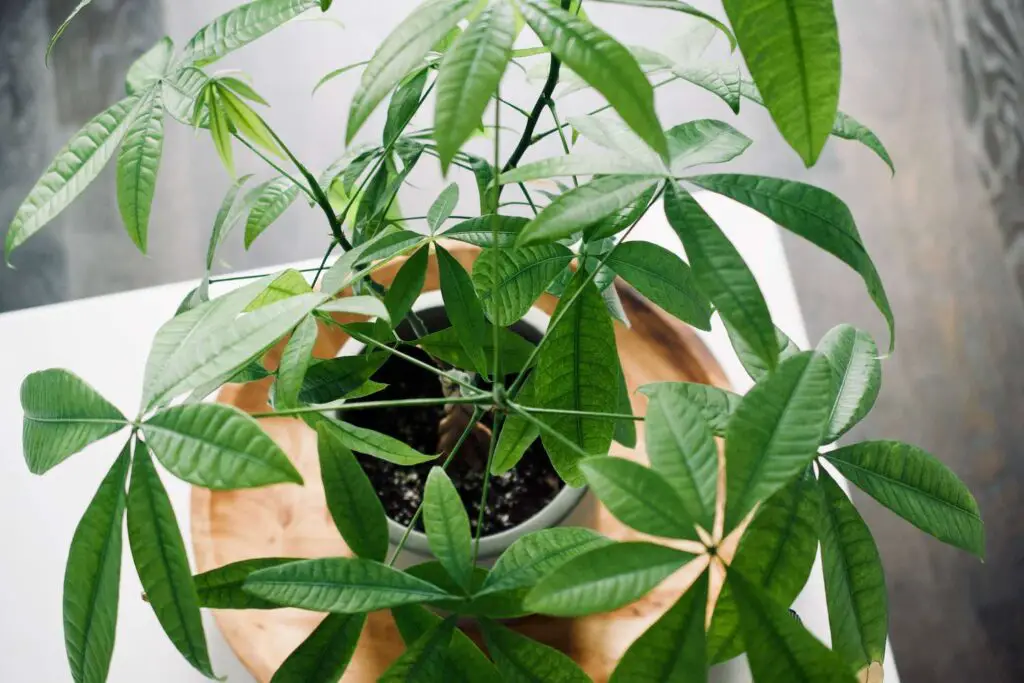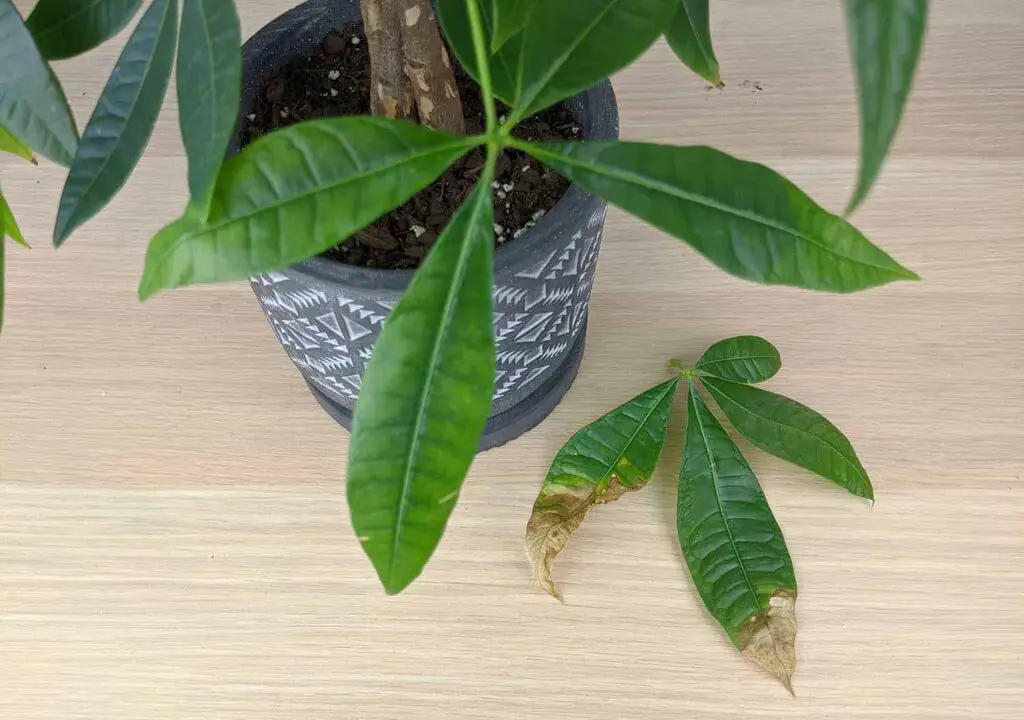The Money Tree plant, also known as Pachira aquatica, is generally considered safe for cats. Its non-toxic nature allows pet owners to enjoy this beautiful houseplant without worrying about their feline friends. Keeping both pets and plants happy is possible with the right care.
Understanding the Money Tree Plant
The Money Tree plant is a popular choice for indoor gardening. Originating from Central and South America, it is well-known for its unique braided trunk and lush green leaves. This plant is not only aesthetically pleasing but also comes with a variety of believed benefits, such as bringing good luck and prosperity.

As a low-maintenance plant, the Money Tree is suitable for both novice and experienced plant owners. It can thrive in various lighting conditions, making it adaptable to different indoor environments. Moreover, its ability to purify the air adds to its appeal, creating a healthier living space.
Characteristics of the Money Tree
The Money Tree typically grows between 3 to 6 feet tall when kept indoors. Its leaves are glossy and can have five to seven leaflets per stem. This unique leaf formation contributes to its charm. Over time, the plant may produce small white or yellow flowers, which eventually turn into nuts.
Taking care of a Money Tree involves providing adequate light, water, and humidity levels. Here are some key care tips:

- Light: The Money Tree prefers bright, indirect sunlight but can tolerate low light conditions.
- Water: Water the plant when the top inch of soil feels dry. Avoid overwatering to prevent root rot.
- Humidity: This plant enjoys humidity, so misting its leaves occasionally can be beneficial.
Why Cats and Plants Can Coexist
Many pet owners love having plants in their homes but worry about their pets’ safety. Thankfully, the Money Tree is a non-toxic option for households with cats. Understanding the differences between toxic and non-toxic plants is crucial for pet safety.
Common household plants can be harmful to cats. For example, lilies and poinsettias are known to be toxic and can cause serious health issues if ingested. Therefore, selecting plants that are safe for pets is essential for maintaining a harmonious household.
Benefits of Non-Toxic Plants
Here are some advantages of incorporating non-toxic plants like the Money Tree into your home:

- Peace of Mind: Knowing that your plants are safe allows you to enjoy their beauty without worry.
- Health Benefits: Many non-toxic plants can improve indoor air quality and provide a calming atmosphere.
- Aesthetics: Non-toxic options still offer stunning designs and colors that enhance your living space.
Recognizing Signs of Plant Ingestion
Even though the Money Tree is safe for cats, it is still important to monitor your pets around plants. Cats are naturally curious creatures and may attempt to nibble on leaves or dig in the soil. Here are some signs that your cat may have ingested a plant:
- Vomiting: Frequent vomiting can indicate that your cat has ingested something it shouldn’t have.
- Diarrhea: Changes in bowel movements may suggest digestive issues related to plant ingestion.
- Lethargy: If your cat appears unusually tired or inactive, it may be a sign of discomfort.
If you notice any of these symptoms, it is advisable to consult your veterinarian promptly. Early intervention can help ensure your pet’s health and well-being.
Caring for Both Cats and Plants
Maintaining a balance between pets and plants can be rewarding. Here are some strategies to keep both happy:
- Placement: Position plants out of reach of curious paws while ensuring they still receive adequate light.
- Provide Alternatives: Offering cat grass or other safe plant options can satisfy your cat’s curiosity and chewing tendencies.
- Training: Teach your cat to avoid certain plants through positive reinforcement techniques.
Caring for your Money Tree while ensuring your cat’s safety is entirely possible. With the right approach, both your plants and pets can thrive together in harmony.

Signs of a Happy Money Tree
To ensure that your Money Tree is thriving, it’s important to recognize the signs of a healthy plant. A well-cared-for Money Tree will exhibit specific traits that indicate it is happy and growing well. Here are some key indicators to look for:
- Lustrous Leaves: Healthy Money Tree leaves should be shiny and vibrant green. Dull or yellowing leaves may indicate issues with watering or light.
- Stable Growth: New leaves should emerge regularly. If your plant isn’t producing new growth, it may be time to reassess its care.
- Strong Trunk: The trunk should be firm and upright. A wilting or drooping trunk can signal overwatering or disease.
- No Pests: A pest-free plant is a happy plant. Regularly check for signs of insects like spider mites or aphids.
Watering Techniques for Your Money Tree
Watering is one of the most critical aspects of plant care. How you water your Money Tree can significantly affect its health. Here are some effective watering techniques:
- Check Soil Moisture: Always check the top inch of the soil before watering. If it feels dry, it’s time to water.
- Water Thoroughly: When you water, do so thoroughly until you see water draining from the bottom of the pot. This ensures that the roots receive adequate moisture.
- Avoid Standing Water: Ensure there is no water left sitting in the saucer beneath the pot. This can lead to root rot.
How Light Affects Growth
The amount of light your Money Tree receives plays a vital role in its overall health. Understanding its light requirements is essential for keeping it happy:
- Indirect Sunlight: Money Trees thrive in bright, indirect sunlight. Too much direct sunlight can scorch the leaves.
- Low Light Adaptation: While they can tolerate low light conditions, extended periods in low light may slow growth.
- Rotate Your Plant: To promote even growth, rotate your Money Tree every few weeks, ensuring all sides receive light.
Common Issues with Money Trees
Even with the best care, Money Trees can face challenges. Identifying common issues early can help you take corrective action. Here are some frequent problems and their solutions:
Leaf Yellowing
If you notice your Money Tree’s leaves turning yellow, it may be due to overwatering or poor drainage. Here are steps to remedy the situation:
- Assess Watering Schedule: Ensure you are not watering too frequently. Allow the soil to dry out slightly between waterings.
- Check Pot Drainage: Make sure your pot has adequate drainage holes to prevent water from pooling at the bottom.
Pest Infestations
Pests can be a significant issue for indoor plants. Common pests that may affect Money Trees include spider mites, aphids, and mealybugs. To combat these pests:
- Regular Inspections: Frequently check the undersides of leaves and stems for signs of pests.
- Use Natural Remedies: Introduce insecticidal soap or neem oil to treat infestations while keeping your home pet-friendly.
Creating a Cat-Friendly Environment
Your living space can be designed to accommodate both your cats and your Money Tree effectively. Here are some ideas to create a harmonious environment:
- Plant Shelves: Consider using shelves to place your plants out of reach while still enjoying their beauty. This keeps both cats and plants safe.
- Cats’ Play Area: Provide dedicated play areas for your cats, filled with toys and climbing structures, so they are less likely to disturb houseplants.
- Plant Barriers: Use decorative barriers around plants or pots to deter cats from getting too close.
By following these tips and recognizing the signs of a happy Money Tree, you can create a vibrant home environment that supports both your furry friends and your beloved plants.
2>Feline-Friendly Alternatives to Money Trees
If you’re looking for additional plants that are safe for cats and aesthetically pleasing, there are several alternatives to the Money Tree. These plants not only add beauty to your home but also ensure the safety of your feline friends. Here are some great options: Incorporating non-toxic plants into your home can provide numerous benefits beyond aesthetics. Here are some reasons why choosing pet-safe plants is advantageous: Understanding why cats are drawn to plants can help you create a safer environment for both your pets and your plants. Here are some common behaviors exhibited by cats around plants: If your cat frequently interacts with your plants, consider these strategies to redirect their behavior: >Educating yourself about plant care is essential for maintaining a healthy environment for both your Money Tree and your cats. Here are some areas to focus on: Many resources are available to help you educate yourself about plant care and pet safety. Consider the following: Taking the time to learn about plant care will benefit both your Money Tree and your cats. A well-informed pet owner is better equipped to create a safe and enjoyable living space for everyone. >The relationship between pets and plants in your home can be incredibly rewarding. Creating an environment that supports both your Money Tree and your cats requires ongoing attention and care. Here are some additional strategies to ensure a thriving indoor ecosystem: Getting your cats involved in plant care can be a fun way to bond with them while ensuring their safety. Here are some activities you might try: Having plants like the Money Tree can bring numerous benefits beyond aesthetics. Some of these advantages include: Creating a home that accommodates both your Money Tree and your cats is not only achievable but can also enhance the quality of life for everyone involved. With the right knowledge and practices, you can ensure that your indoor space remains vibrant and safe. Remember to choose non-toxic plants, carefully monitor their growth, and engage in educational resources to stay informed. The Money Tree offers a beautiful and safe option for pet owners who wish to incorporate greenery into their homes. Understanding the needs of both your plant and your feline companions allows for a balanced coexistence that promotes health, happiness, and well-being. By following the tips outlined in this article, you can cultivate an environment where both plants and pets thrive together harmoniously. Ultimately, the goal is to enjoy the best of both worlds: the beauty of nature within your home and the joy of having happy, healthy pets. With careful planning and consideration, you can create a sanctuary that serves both purposes effectively.
Benefits of Non-Toxic Plants for Cat Owners
Understanding Cat Behavior Around Plants
Ways to Redirect Cat Behavior
The Importance of Plant Care Education
Resources for Plant Care and Safety
Maintaining a Thriving Indoor Environment
Involving Your Cats in Plant Care
The Benefits of Plant Companionship
Final Thoughts
